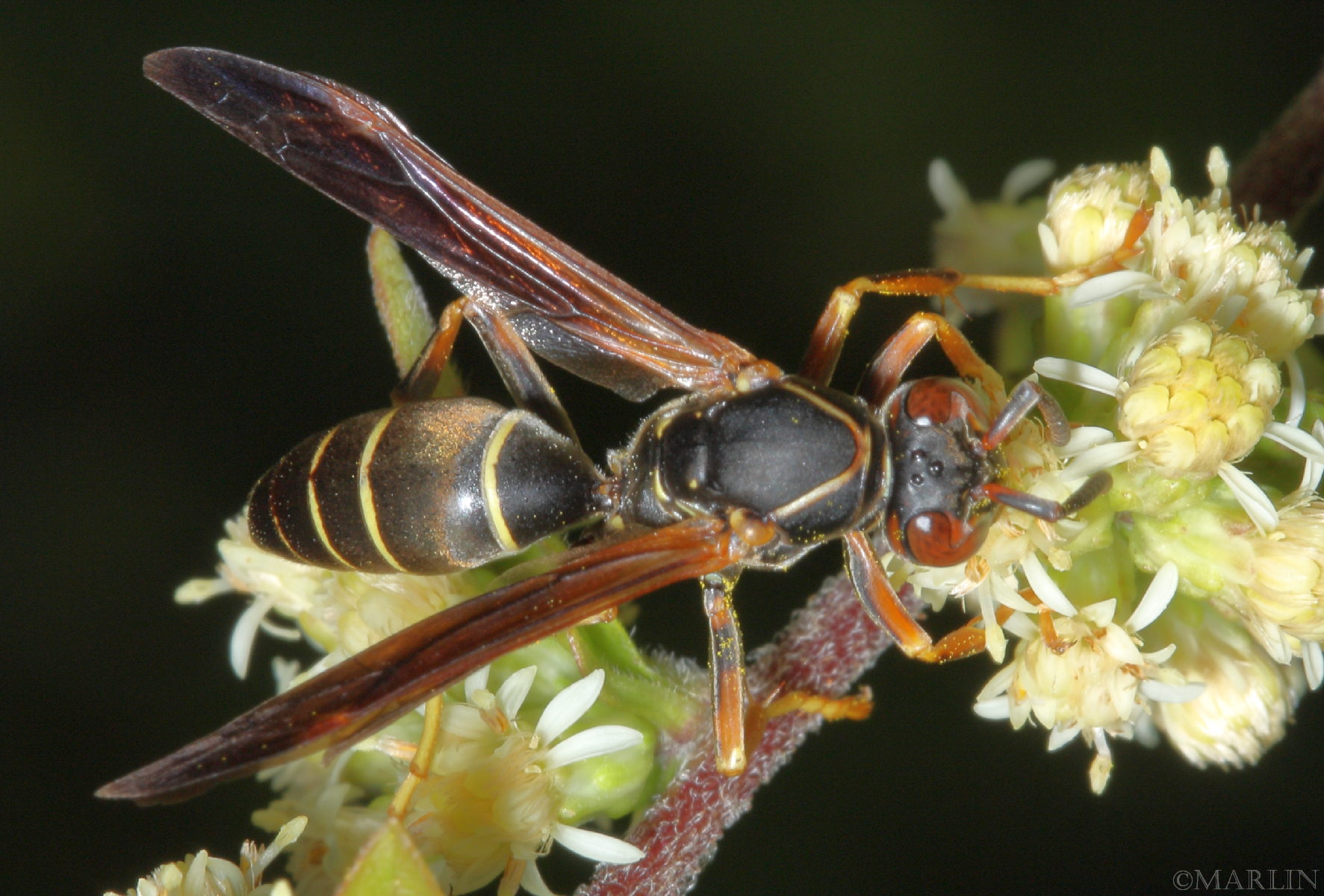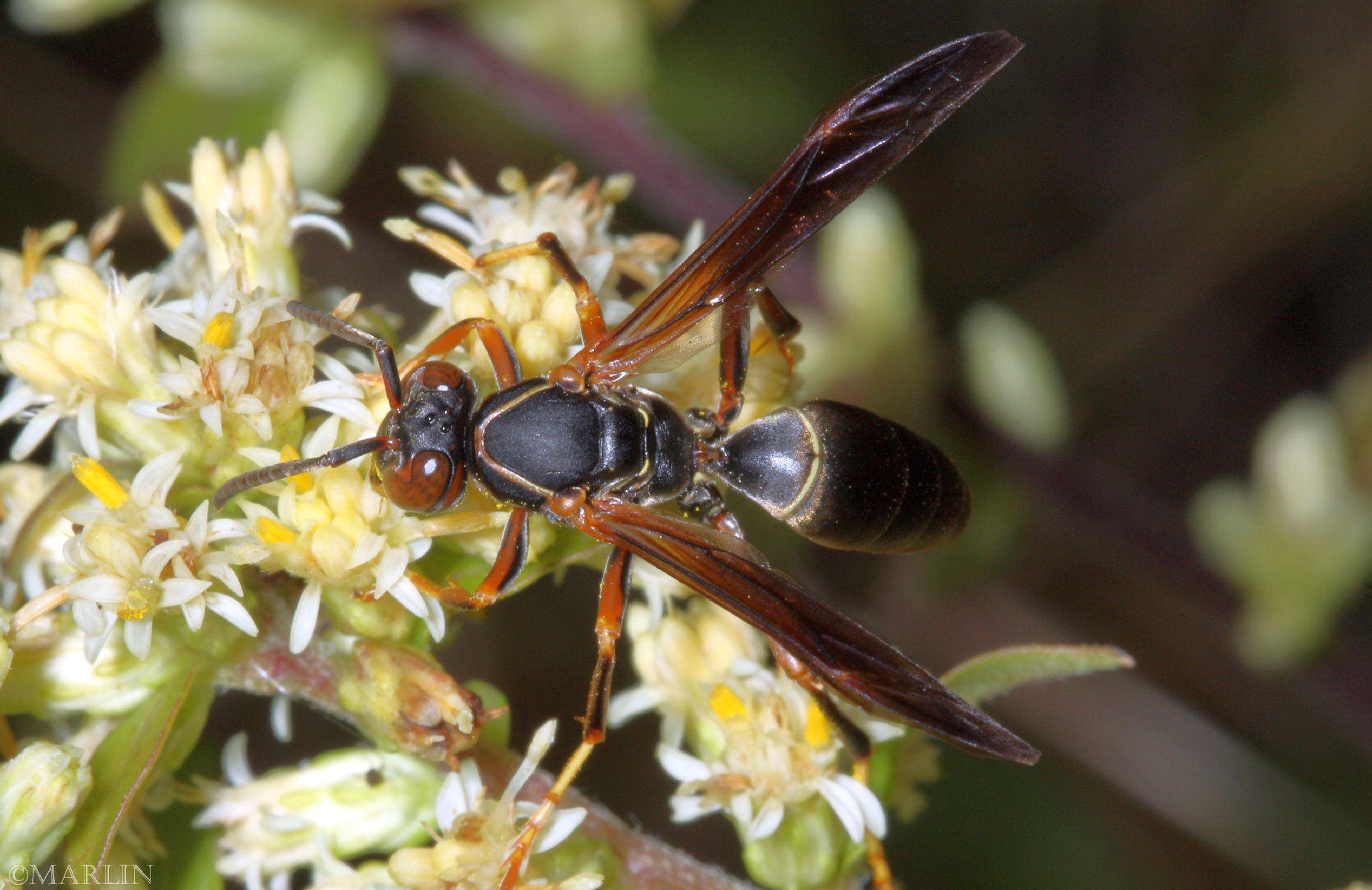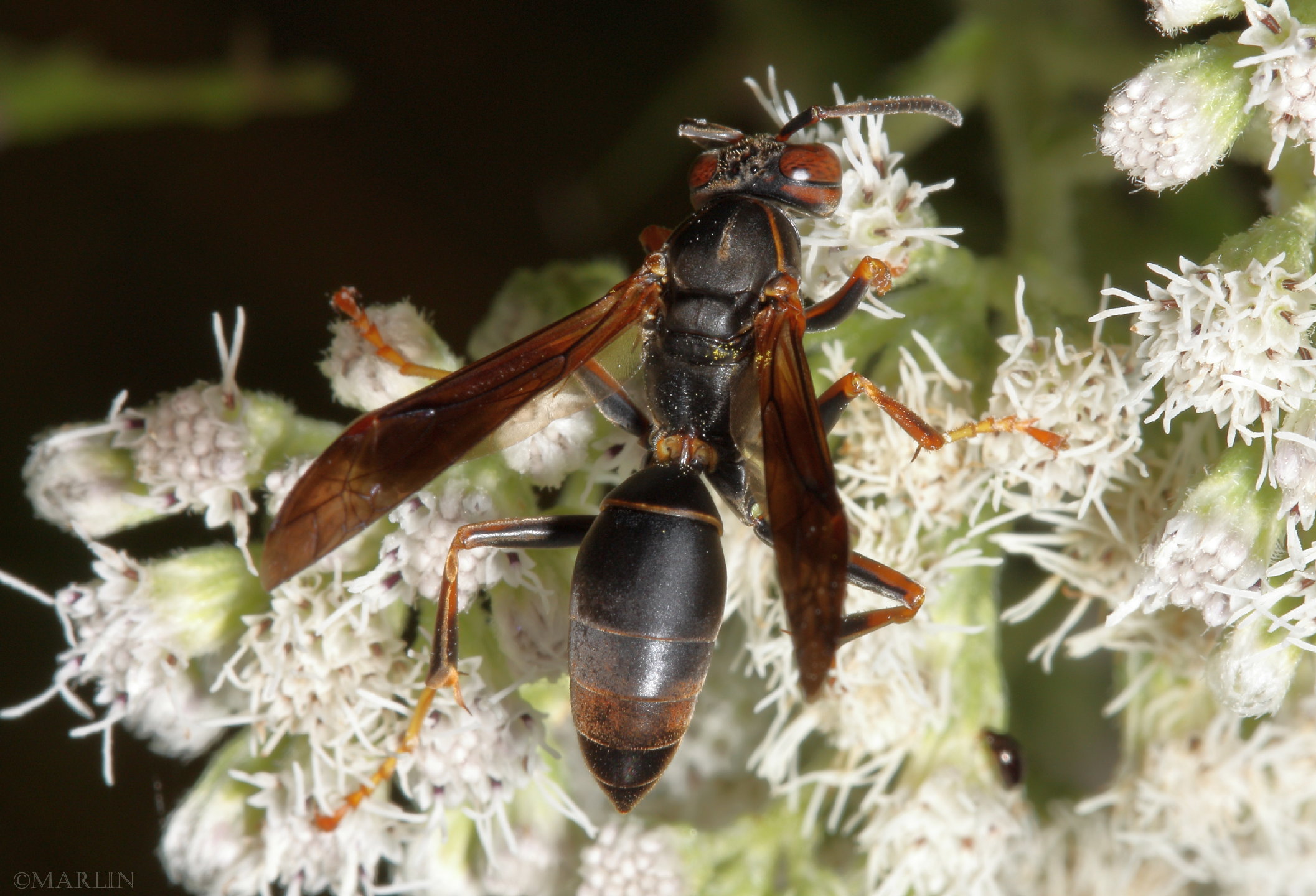Northern Paper Wasp – Polistes fuscatus
 Also commonly called golden or common paper wasp
Also commonly called golden or common paper wasp
Live adult paper wasps photographed in the wild at northern Illinois and NE Pennsylvania, USA.
Most paper wasps measure about 2 cm (0.75 in) long and are black, brown, or reddish in color with yellow markings. Paper wasps will defend their nest if attacked. Adults forage for nectar, their source of energy, and for caterpillars and other small insects (e.g. boxelder bug nymphs) to feed the larvae. They are natural enemies of many garden insect pests.
The nests of most species are suspended from a single, central stalk, or pedicle, and have the shape of an upside-down umbrella. Some tropical species make nests that hang in a vertical sheet of cells. Plant and wood fibers are collected by the wasps, mixed with saliva, and chewed into a paper-like material that is formed into the thin cells of the nest. The nests are constructed in protected places, such as under the eaves of buildings or in dense vegetation.
 The colony is founded in early spring, soon after the queens emerge from hibernation. As the colony matures, males and the next year’s queens are produced. These queens mate with males and are the only members of the colony to survive through winter. In late summer or fall, the founding queen, workers (sterile females), and males all die. The newly mated queens hibernate, in piles of wood, in vegetation, or in holes. The following spring they emerge and begin the cycle anew.
The colony is founded in early spring, soon after the queens emerge from hibernation. As the colony matures, males and the next year’s queens are produced. These queens mate with males and are the only members of the colony to survive through winter. In late summer or fall, the founding queen, workers (sterile females), and males all die. The newly mated queens hibernate, in piles of wood, in vegetation, or in holes. The following spring they emerge and begin the cycle anew.
Insects & Spiders | Bees & Wasps Index | Bees & Wasps Main | Bee Flies | Robber Flies
Tree Encyclopedia / North American Insects & Spiders is dedicated to providing family-friendly educational
resources for our friends around the world through large images and macro photographs of flora and fauna.


